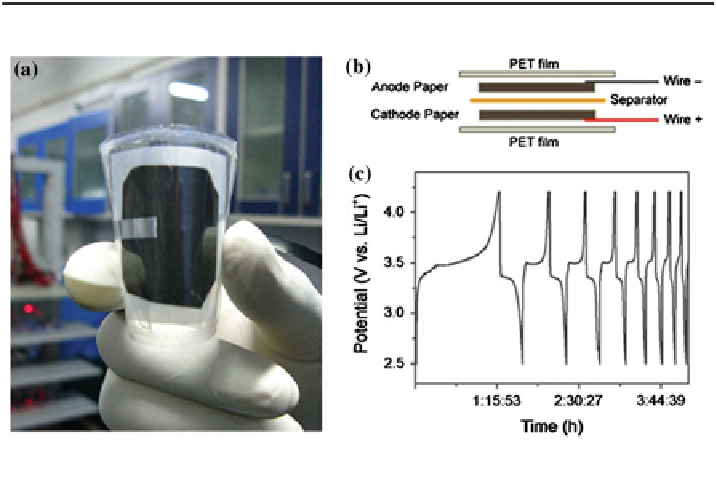Environmental Engineering Reference
In-Depth Information
Table 1 Comparison of the performance of several nanomaterials in its composite in graphene
paper form and in the conventional electrode form with carbon black and PVDF binder, current
densities are all at 100 mA g
-1
Material form
Reversible capacitance at different cycles
(mAh g
-1
)
1st
2nd
5th
50th
MnO
2
nanowire
1,108
320
206
91
MnO
2
nanowire-graphene paper
1,321
531
501
546
MnO
2
nanotube
1,221
303
202
89
MnO
2
nanotube-graphene paper
1,292
500
453
369
MnO
2
/SnO
2
1,400
445
362
113
MnO
2
/SnO
2
-graphene paper
1,119
510
435
272
Sn nanoparticle
726
175
57
0
Sn nanoparticle-graphene paper
593
672
573
83
Sn nanoparticle-graphene paper (calcined)
1,107
823
715
437
Si particle
2,498
198
71
0
Si particle-graphene paper
2,540
2,080
1,768
886
Si particle-graphene paper (calcined)
3,009
2,663
2,100
44
LiFePO
4
136
137
136
149
LiFePO
4
-graphene paper
161
161
159
159
V
2
O
5
185
178
169
50 (200th)
V
2
O
5
-graphene paper (calcined)
25
25
30
198 (200th)
Fig. 16 a Digital photograph of the flexible battery. b Schematic illustration of the flexible
battery configuration. c Galvanostatic charge/discharge curves of the flexible battery
nanomaterials in its composite in graphene paper form and in the conventional
electrode form with CB and PVDF binder, from which we can see both reversible
capacity and cycling stability can be improved by composite into graphene paper.




Search WWH ::

Custom Search